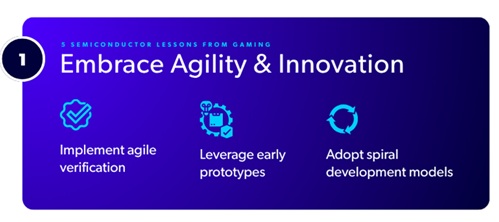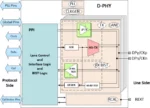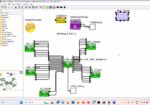In the dynamic landscape of chip design, two trends stand out as game-changers: the rise of the RISC-V instruction set architecture (ISA) and the advent of Software Defined products. Today, we delve into why these trends are not just shaping the industry but propelling companies like Andes and Menta to the forefront of innovation.… Read More
 Think Quantum Computing is Hype? Mastercard Begs to DisagreeJust got an opportunity to write a blog…Read More
Think Quantum Computing is Hype? Mastercard Begs to DisagreeJust got an opportunity to write a blog…Read More TSMC Kumamoto: Pioneering Japan's Semiconductor RevivalIn the lush landscapes of Kumamoto Prefecture, on…Read More
TSMC Kumamoto: Pioneering Japan's Semiconductor RevivalIn the lush landscapes of Kumamoto Prefecture, on…Read More Memory Matters: The State of Embedded NVM (eNVM) 2025Make a difference and take this short survey.…Read More
Memory Matters: The State of Embedded NVM (eNVM) 2025Make a difference and take this short survey.…Read More 5 Lessons the Semiconductor Industry Can Learn from GamingBy Kamal Khan The semiconductor world has always…Read More
5 Lessons the Semiconductor Industry Can Learn from GamingBy Kamal Khan The semiconductor world has always…Read MoreSynopsys SNUG Silicon Valley Conference 2024: Powering Innovation in the Era of Pervasive Intelligence
After the leadership transition at the top, Synopsys had just a little more than two months before the company’s flagship event, the Synopsys User Group (SNUG) conference. The Synopsys user community and entire ecosystem were waiting to hear new CEO Sassine Ghazi’s keynote to learn where the company is going and its strategic … Read More
Ultra-low-power MIPI use case for streaming sensors
MIPI built its reputation on the efficient streaming of data from camera sensors in mobile devices. It combines high-speed transfers with balanced power consumption, helping extend battery life while providing the responsiveness users expect. However, high speed is not the only mode of operation for a MIPI interface – specifications… Read More
Arm Automotive Update Stresses Prototyping for Software Development
If you were at all uncertain about auto OEM development priorities, the answer is becoming clear: to accelerate/shift left automotive software development and debug. At 100M lines of code and accelerating, this task is overshadowing all others. A recent Arm update from Dipti Vachani (SVP and GM for the Automotive Line of Business)… Read More
2024 Outlook with Srinivasa Kakumanu of MosChip
MosChip is a publicly traded company founded in the year 1999, they offer semiconductor design services, turnkey ASIC, software services, and end-to-end product engineering solutions. The company headquartered in Hyderabad, India, with five design centers and over 1300 engineers located in Silicon Valley (USA), Hyderabad,… Read More
Fault Simulation for AI Safety. Innovation in Verification
More automotive content 😀
In modern cars, safety is governed as much by AI-based functions as by traditional logic and software. How can these functions be fault-graded for FMEDA analysis? Paul Cunningham (GM, Verification at Cadence), Raúl Camposano (Silicon Catalyst, entrepreneur, former Synopsys CTO and now Silvaco CTO)… Read More
A Modeling, Simulation, Exploration and Collaborative Platform to Develop Electronics and SoCs
During the GOMACTech conference held in South Carolina last week I had a Zoom call with Deepak Shankar, Founder and VP Technology at Mirabilis Design Inc. to ask questions and view a live demo of VisualSim – a modeling, simulation, exploration and collaborative platform to develop electronics and SoCs. What makes VisualSim so … Read More
Weebit Nano Brings ReRAM Benefits to the Automotive Market
Non-volatile memory (NVM) is a critical building block for most electronic systems. The most popular NVM technology has traditionally been flash. As a discrete part, the technology can be delivered in various form factors. For embedded applications flash presents scaling challenges, however. A new NVM technology developed… Read More
2024 DVCon US Panel: Overcoming the challenges of multi-die systems verification
2024 DVCon was very busy this year. Bernard Murphy and I were in attendance for SemiWiki, he has already written about it. Multi die and chiplets was again a popular topic. Lauro Rizzatti, a consultant specializing in hardware-assisted verification, moderated an engaging panel, sponsored by Synopsys, focusing on the intricacies… Read More
Andes Technology: Pioneering the Future of RISC-V CPU IP
On September 13, 2021, Andes Technology Corporation successfully issued its GDR (Global Depositary Receipt) public offering on the Luxembourg Stock Exchange. At the time it made Andes the only international public RISC-V Instruction set architecture (ISA) CPU IP supplier. This allowed investors around the world to participate… Read More











AI RTL Generation versus AI RTL Verification